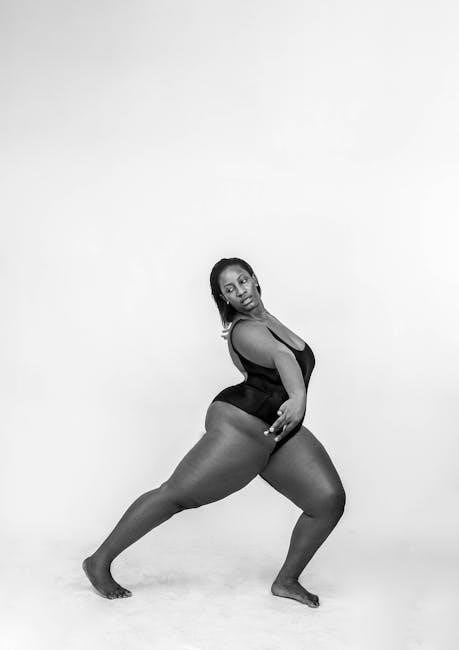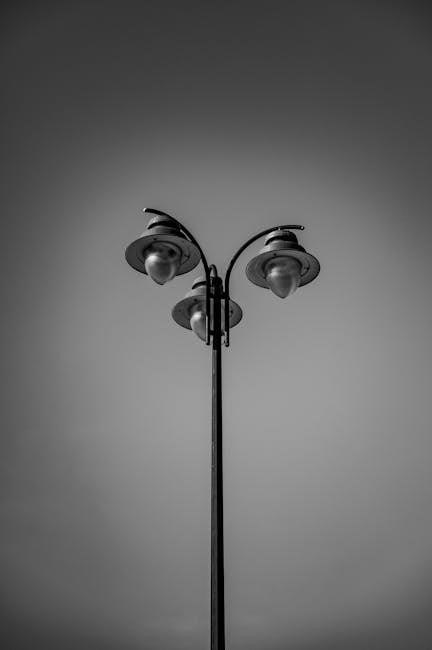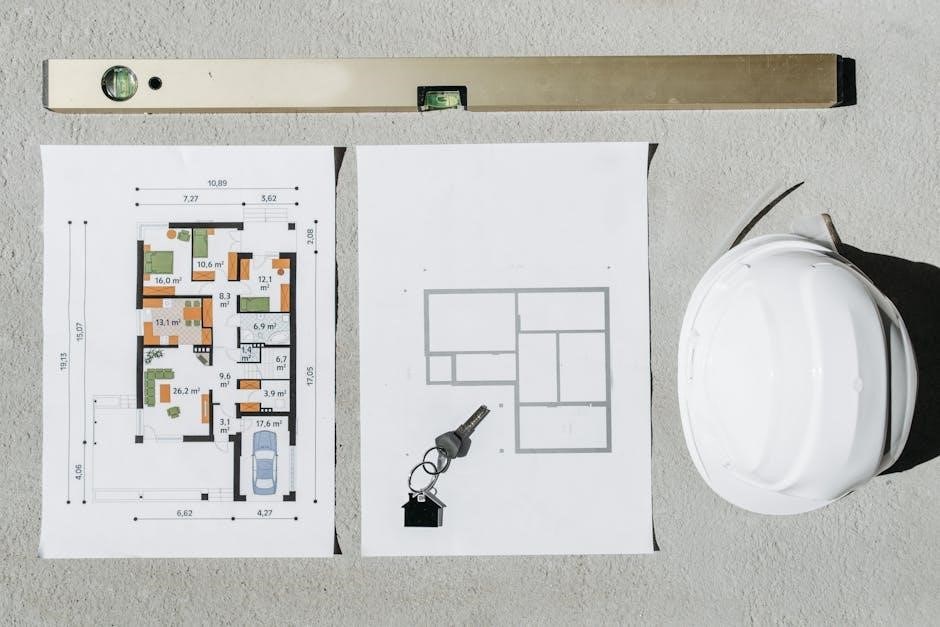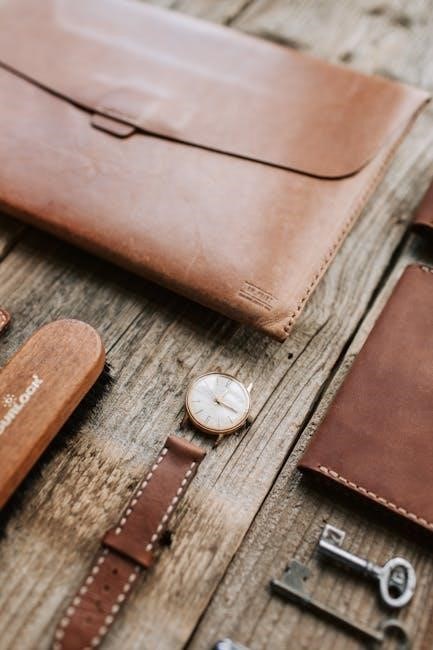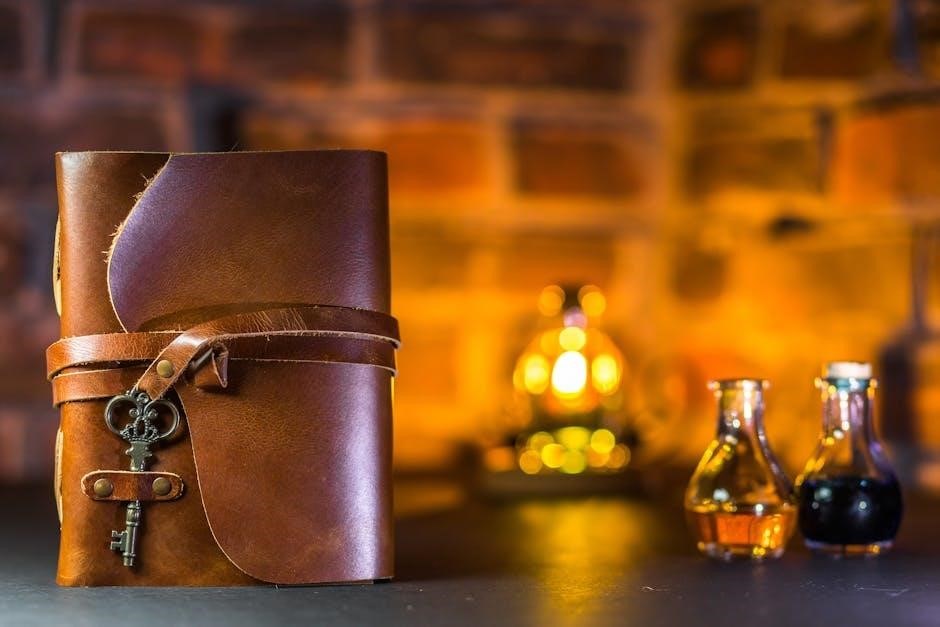The auto standby/auto off feature in the Vivitar V60043BT speaker is a power-saving function that extends battery life by automatically turning the speaker off after a period of inactivity, typically 15 minutes, helping to conserve energy and prolong device lifespan.
1.1 Overview of the Vivitar V60043BT Speaker
The Vivitar V60043BT is a portable wireless speaker designed for high-quality audio playback. It features Bluetooth connectivity, a waterproof design, and built-in controls for easy operation. This speaker is ideal for outdoor and indoor use, offering robust sound performance. The V60043BT also includes power-saving features like auto standby and auto off, which help extend battery life by automatically turning the speaker off after periods of inactivity, making it a practical choice for everyday use.
1.2 Importance of Power-Saving Features
Power-saving features like auto standby and auto off are crucial for extending the battery life of portable devices such as the Vivitar V60043BT speaker. These features prevent unnecessary energy consumption when the device is inactive, ensuring longer playback sessions and reducing the need for frequent recharging. By automatically entering low-power modes, they help maintain overall device performance and efficiency, making them essential for users seeking convenience and sustainability in their wireless audio experience.

Understanding Auto Standby Mode
Auto standby mode is a power-saving feature that automatically switches the Vivitar V60043BT speaker to a low-power state after a predefined period of inactivity, preserving battery life.
2.1 Definition and Purpose
Auto standby mode is a power-saving feature designed to conserve battery life by automatically switching the Vivitar V60043BT speaker to a low-power state after a period of inactivity. This feature ensures that the speaker does not consume unnecessary energy when not in use, helping to extend its operational lifespan. By entering standby mode after approximately 15 minutes without audio playback or Bluetooth connection, it minimizes battery drain and enhances overall user experience by reducing the need for manual adjustments. This functionality is essential for maintaining efficiency and prolonging the device’s performance.
2;2 How Auto Standby Extends Battery Life
The auto standby feature on the Vivitar V60043BT speaker extends battery life by automatically reducing power consumption when the device is inactive. After a set period without audio playback or Bluetooth connection, the speaker switches to a low-power standby mode, minimizing battery drain. This prevents unnecessary energy usage and ensures the battery lasts longer between charges, helping to maintain optimal performance and extend the overall lifespan of the speaker. This energy-efficient design is particularly beneficial for portable use.
2.3 Typical Inactivity Duration for Activation
The auto standby feature on the Vivitar V60043BT speaker typically activates after 15 minutes of inactivity, defined as a lack of audio playback or Bluetooth connection. This duration is designed to balance convenience and energy efficiency, ensuring the speaker remains ready for use while minimizing unnecessary power consumption. Once inactive for the specified time, the speaker automatically transitions to a low-power standby mode, helping to preserve battery life and maintain performance over time. This feature is a key component of the speaker’s energy-saving design.

Auto Off Feature Explanation
The auto off feature automatically shuts down the Vivitar V60043BT speaker after an extended period of inactivity, conserving energy and extending battery life efficiently.
3.1 Functionality and Benefits
The auto off feature in the Vivitar V60043BT speaker functions by automatically deactivating the device after a prolonged period of inactivity, typically around 15 minutes without audio playback or Bluetooth connection. This functionality helps in preserving battery life, reducing energy waste, and extending the overall lifespan of the speaker. By preventing unnecessary power consumption, it ensures the device remains energy-efficient and ready for use when needed, enhancing user experience and convenience.
3.2 Preventing Unnecessary Energy Consumption
The auto off feature prevents unnecessary energy consumption by automatically deactivating the Vivitar V60043BT speaker after a set period of inactivity, typically 15 minutes. This ensures that the speaker does not consume power when not in use, conserving battery life and reducing energy waste. By eliminating standby power draw, the feature contributes to more efficient energy use and prolongs the device’s operational lifespan, making it an eco-friendly and practical solution for everyday use.
3.3 Lifespan Extension of the Device
The auto standby and auto off features play a crucial role in extending the lifespan of the Vivitar V60043BT speaker. By automatically shutting off the device after periods of inactivity, these features prevent unnecessary power consumption, reducing battery degradation and minimizing stress on internal components. This not only prolongs the speaker’s operational life but also ensures reliable performance over time, making it a sustainable and efficient audio solution for users seeking long-term durability and value.

How to Enable/Disable Auto Standby/Auto Off
To manage the auto standby/auto off feature on the Vivitar V60043BT, use the speaker’s physical controls, adjust settings via Bluetooth connection, or configure through the Sony Music Center app.
4.1 Using the Speaker’s Physical Controls
To enable or disable the auto standby/auto off feature on the Vivitar V60043BT, locate the power button and function button; Press and hold both buttons simultaneously for 3-5 seconds. The speaker will enter or exit standby mode, indicated by a change in the LED light’s blinking pattern. This method provides a quick and straightforward way to manage the power-saving features without needing additional software or apps.
4.2 Adjusting Settings via Bluetooth Connection
To adjust the auto standby/auto off settings via Bluetooth, connect the Vivitar V60043BT to your device using the Sony Music Center app. Open the app, select the speaker from the list of connected devices, and navigate to the settings menu. From there, you can enable or disable the auto standby and auto off features, as well as customize the inactivity duration before the speaker enters standby mode. This method offers a convenient way to manage power settings wirelessly.
4.3 Using Sony Music Center for Configuration
The Sony Music Center app provides a user-friendly interface to configure the auto standby and auto off features of the Vivitar V60043BT speaker; Once connected via Bluetooth, open the app and select the speaker from the device list. Navigate to the “Settings” menu, where you can enable or disable the auto standby function, set the inactivity timer, and adjust other power-saving preferences. This method allows for precise control over the speaker’s power management, enhancing both convenience and energy efficiency.

Troubleshooting Auto Standby/Auto Off Issues

If the auto standby/auto off feature malfunctions, check the power button functionality, ensure the feature is enabled, and reset the speaker if necessary.
Common issues include the speaker not entering standby mode or turning off unexpectedly. Solutions involve checking battery levels, ensuring the feature is enabled via Sony Music Center, and resetting the speaker by holding the power button for 10 seconds. If problems persist, updating the firmware or performing a factory reset may resolve the issue. Always refer to the user manual for detailed troubleshooting steps. Resetting your Vivitar V60043BT speaker to factory settings can resolve persistent issues with auto standby/auto off functionality. To reset, press and hold the power button for 10 seconds until the speaker restarts. This action restores default settings, including disabling the auto standby feature. After resetting, re-enable the feature via the Sony Music Center app or physical controls to ensure proper power management. Always back up custom settings before performing a factory reset. Updating the firmware of your Vivitar V60043BT speaker ensures optimal performance of the auto standby/auto off feature. Use the Sony Music Center app to check for updates and install the latest version. A stable Bluetooth connection is required during the update process. After updating, restart the speaker to apply changes. Firmware updates often include bug fixes and improvements for power-saving features, enhancing overall functionality and user experience. Regular updates are recommended to maintain peak performance. The Vivitar V60043BT manual is available on Manua.ls, offering detailed instructions and specifications. It covers features like auto standby and power-saving modes for optimal use. To find the auto standby/auto off feature in the Vivitar V60043BT manual, visit Manua.ls and download the PDF guide. Navigate to the “Power-Saving Features” section, which details how to activate and adjust the auto standby and auto off settings. This section provides step-by-step instructions and explains the benefits of these features for extending battery life and optimizing speaker performance. Ensure to refer to the exact model number, V60043BT, for accurate information. To activate the auto standby/auto off feature on the Vivitar V60043BT, open the Sony Music Center app and navigate to the speaker settings. Toggle the “Auto Standby” option to enable it. Alternatively, press and hold the power button and pairing button simultaneously for 3 seconds to activate the feature directly on the speaker. Refer to the manual for detailed instructions on adjusting inactivity timing and customizing power-saving preferences to suit your usage needs. The Vivitar V60043BT speaker uses indicator lights to signal its status. A steady blue light indicates an active Bluetooth connection, while a blinking blue light shows pairing mode. When entering auto standby, the light dims or pulses slowly. If the speaker auto turns off, the light turns off completely. Notifications, such as low battery alerts, appear via the Sony Music Center app. These visual cues help users understand the speaker’s power state and connectivity without confusion. For optimal use, utilize the speaker’s physical controls to adjust settings, ensure stable Bluetooth connectivity, and regularly check battery levels via the Sony Music Center app. To conserve battery life on your Vivitar V60043BT speaker, enable the auto standby feature, which turns the device off after 15 minutes of inactivity. This prevents unnecessary energy consumption. Regularly charge the speaker using the provided USB cable and avoid overcharging. Additionally, keeping the firmware updated ensures optimal power management, enhancing overall battery performance and longevity. These practices help maintain your speaker’s efficiency and extend its operational lifespan effectively. To prevent accidental activation, disable the auto standby feature when not needed or use the speaker’s physical lock button to avoid unintended button presses. Store the device in a secure location to minimize accidental triggers. Additionally, ensure Bluetooth is disconnected when not in use to avoid inadvertent connections. These steps help maintain control over the speaker’s power state and prevent unintended activations, ensuring efficient and intentional use of the Vivitar V60043BT speaker. For seamless pairing, ensure the speaker and your device are in close proximity. Turn on the speaker, which automatically enters Bluetooth mode. Use the Sony Music Center app to adjust settings and ensure stable connectivity. Restart both devices if pairing issues arise. Avoid physical obstructions and interference from other devices. Regularly update your device’s Bluetooth drivers and the speaker’s firmware for optimal performance. Proper pairing enhances audio quality and minimizes disconnections, ensuring a smooth listening experience with the Vivitar V60043BT. The Vivitar V60043BT’s auto standby/auto off feature uniquely enhances battery life compared to other Vivitar models, offering specific power-saving benefits that set it apart. Other Vivitar speakers also incorporate power-saving features like auto standby and auto off, though specific settings may vary. Many models automatically enter standby after periods of inactivity, typically ranging from 10 to 30 minutes, to conserve battery life. While the V60043BT stands out for its 15-minute default, other speakers may offer adjustable timers or additional energy-efficient modes. These shared features ensure consistent performance across Vivitar’s product line. The Vivitar V60043BT distinguishes itself with a balanced approach to power management. Its auto standby feature activates after 15 minutes of inactivity, a duration optimized for user convenience and energy conservation. Unlike other models, the V60043BT seamlessly integrates this feature with Bluetooth connectivity, ensuring a smooth transition to standby without disrupting paired devices. This blend of efficiency and usability makes the V60043BT a standout choice for portable audio solutions. Users have positively received the auto standby/auto off feature in the Vivitar V60043BT, appreciating its role in extending battery life. Many find the 15-minute inactivity threshold convenient, though some wish for adjustable timing. The feature’s seamless integration with Bluetooth maintains connectivity, enhancing user experience. Overall, the balance between energy efficiency and performance makes the V60043BT a preferred choice for many, aligning with their needs for portability and reliability. The Vivitar V60043BT’s auto standby/auto off feature is crucial for optimizing battery life, ensuring extended portability and reliability with minimal energy waste, promoting longer playback sessions. The auto standby feature plays a vital role in managing the battery life of the Vivitar V60043BT speaker. By automatically switching to a low-power mode after a period of inactivity, it prevents unnecessary energy drain, ensuring the battery lasts longer. This feature is essential for optimizing battery performance and extending playback time, making it a key component of the speaker’s energy-efficient design. Proper use of this feature helps maintain the speaker’s portability and reliability for extended use. To ensure maximum efficiency, charge the Vivitar V60043BT speaker using the original charger and avoid overcharging. Allow the battery to drain to low levels before recharging to maintain its health. Keep the speaker in a cool, dry environment while charging to prevent overheating. Regularly updating the firmware and avoiding extreme temperatures can also enhance charging efficiency. Proper charging habits help maintain optimal battery performance and extend the speaker’s overall lifespan. Usage patterns significantly influence the battery life of the Vivitar V60043BT speaker. Continuous playback at high volumes or frequent connections/disconnections can drain the battery faster. Consistent use without periods of inactivity reduces overall playtime. However, leveraging the auto standby feature helps maintain battery health by automatically turning off the speaker during idle times. Balancing usage habits with power-saving features ensures optimal performance and extends the speaker’s operational lifespan. The auto standby/auto off feature in the Vivitar V60043BT speaker is a valuable tool for extending battery life and promoting efficient energy use. By encouraging responsible usage habits and leveraging this feature, users can maximize their speaker’s performance and longevity. Future enhancements could further refine this functionality, ensuring the speaker remains a reliable and eco-friendly audio solution. The auto standby and auto off features on the Vivitar V60043BT speaker offer significant advantages, including extended battery life and reduced energy consumption. By automatically entering standby mode after 15 minutes of inactivity and turning off completely after an extended period, the speaker minimizes unnecessary power usage. These features not only enhance the device’s efficiency but also promote eco-friendly usage habits, making them essential for users seeking to optimize their speaker’s performance and longevity. The auto standby and auto off features on the Vivitar V60043BT speaker promote responsible usage by automatically managing power consumption. Users are encouraged to adopt energy-saving habits, such as turning off the speaker when not in use and monitoring activity periods. These features help reduce unnecessary battery drain, fostering a culture of efficiency and extending the speaker’s operational life. By integrating these power-saving functions, the V60043BT guides users toward more sustainable and mindful usage practices. Future enhancements could include customizable auto standby timers and adjustable inactivity thresholds, allowing users to tailor power-saving settings to their preferences. Integration with smart home systems for voice control of standby modes could also be beneficial. Additionally, user feedback suggests a desire for clearer notifications when the speaker is about to enter standby or turn off. These improvements would enhance usability and efficiency, aligning with user needs for a seamless and adaptive audio experience.5.1 Common Problems and Solutions
5.2 Resetting the Speaker to Factory Settings
5.3 Updating Firmware for Improved Functionality

User Manual Specifics
6.1 Locating the Feature in the Vivitar V60043BT Manual
6.2 Step-by-Step Instructions for Activation
6.3 Understanding Indicator Lights and Notifications
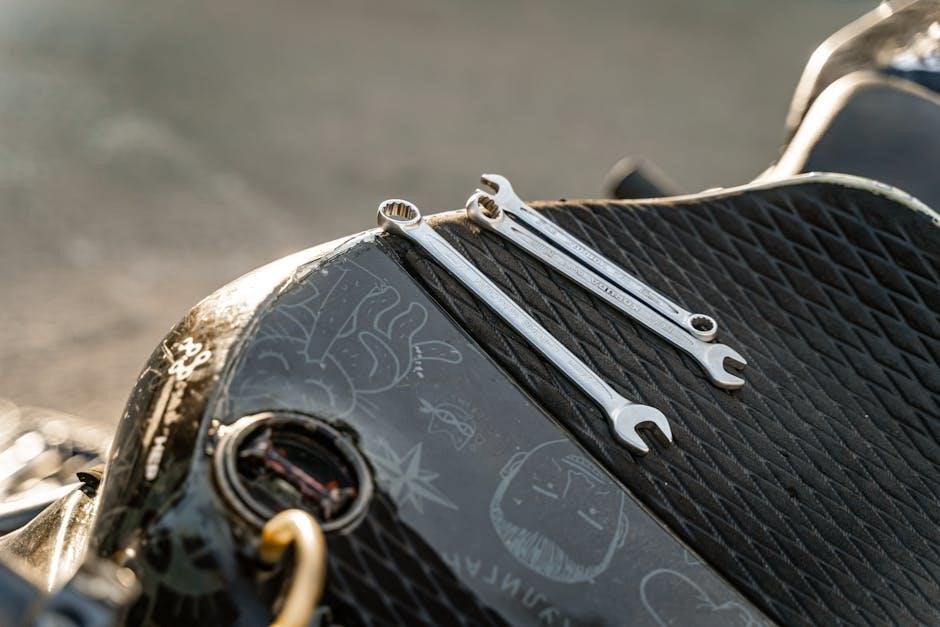
Tips for Optimal Use
7.1 Conserving Battery Life
7.2 Avoiding Inadvertent Activation
7.3 Pairing and Connectivity Best Practices

Comparison with Other Vivitar Models
8.1 Similar Features in Other Vivitar Speakers
8.2 Unique Aspects of the V60043BT Model
8.3 User Feedback and Preferences

Battery Life Optimization
9.1 Role of Auto Standby in Battery Management
9.2 Charging Practices for Maximum Efficiency
9.3 Impact of Usage Patterns on Battery Life
10.1 Summary of Key Benefits
10.2 Encouraging Proper Usage Habits
10.3 Future Enhancements and Feature Requests



